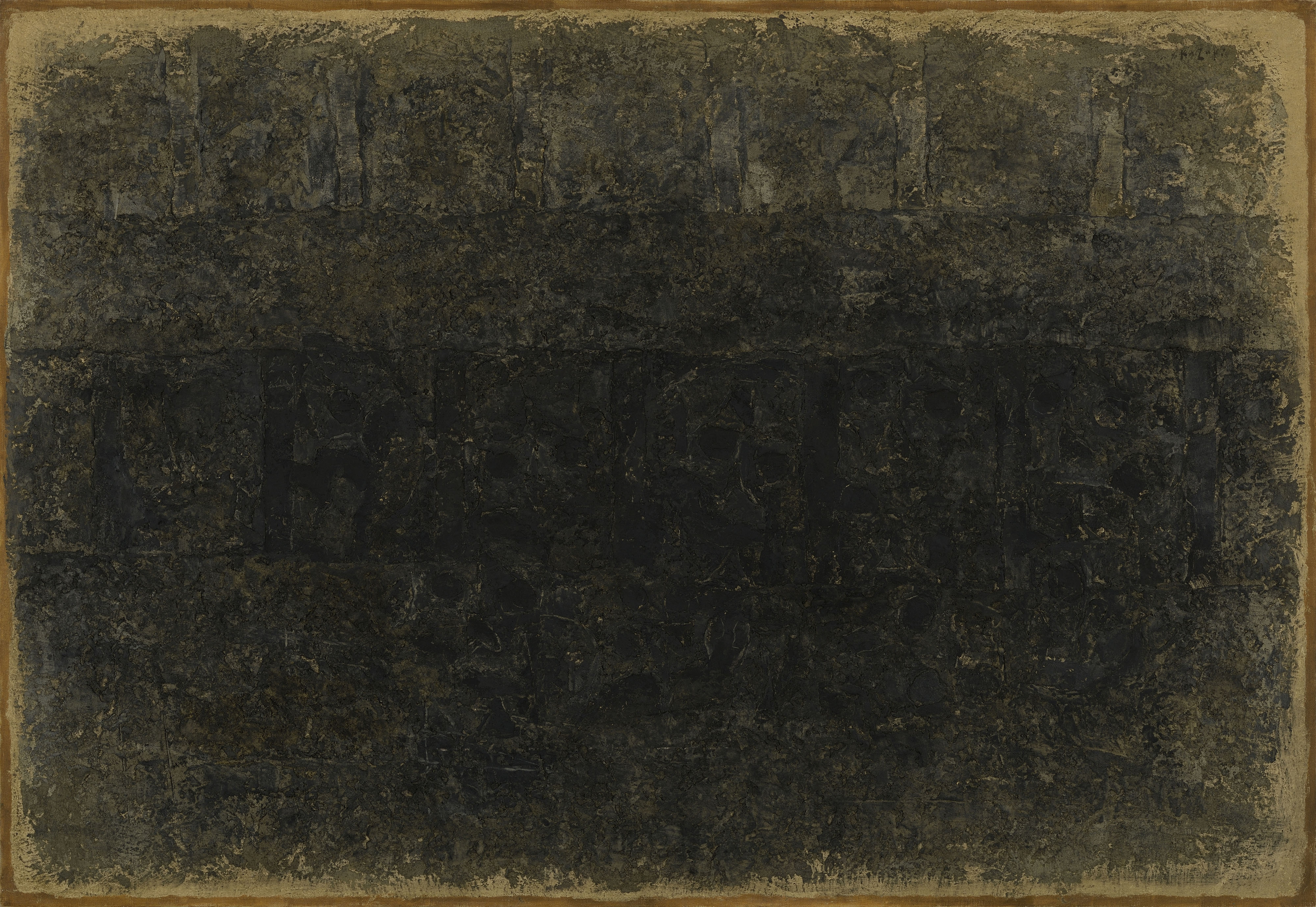
とうど 凍土
1965(昭和40年)
油彩/カンヴァス
〈画家のことば〉
列車は、大地が病んでいるように黒ずんだ湿地帯を過ぎ、ツンドラ地帯へ入った。このあたりは10月中旬だというのに、すでに冬が訪れて、固い凍土が高地を覆っていた。そんな中にソ連の戦車が、あざやかなキャタピラの跡を残して走っていくのが見えた。ツンドラに印されたキャラピラの跡は、翌年の春のおとずれまでは決して消えまい。私は軌道に踏み敷かれた骸骨を描くことによって、愚かしくも残酷な、戦争の無意味さを表現してみたいと思った。
『シベリヤ画集』(新潮社、1971年)
香月泰男【かづき やすお】
生没年 1911~1974(明治44年~昭和49年)
山口県大津郡三隅村(現・長門市三隅)に生まれた香月泰男は、東京美術学校で油彩画を学び、美術教員の傍ら国画会を中心に作品を発表しました。1967年、太平洋戦争への従軍と戦後のシベリア抑留の経験を描いた「シベリア・シリーズ」により、第一回日本芸術大賞を受賞。その作品は今日も多くの人々を惹きつけています。
| 寸法 | 112.0×162.3cm |
|---|---|
| 形状 | 額装 |

Tundra
1965
Oil on canvas
〈Painter’s words〉
The train passed through the sickly blackened wetlands and into the tundra. Though it was only mid-October, winter had already arrived and the ground was frozen solid. We saw Soviet tanks moving around, leaving crisply defined caterpillar tracks in the hard ground of the tundra. The tracks would stay like that until the following spring. It occurred to me that a painting of skeletons stamped down by the crawlers would communicate the foolishness, the cruelty and the futility of war.
Siberian Series (Shinchosha, 1971)
Kazuki Yasuo 1911 – 1974
Born in Misumi-mura (now Misumi, Nagato City) in Otsu-gun, Yamaguchi Prefecture. Studied oil painting at Tokyo School of Fine Arts, then taught fine art while producing works that were primarily exhibited at Kokugakai (National Painting Association). Kazuki was sent to fight in the Pacific War (WWII), then interned in Siberia after the war. This experience resulted in the Siberia Series, which won the inaugural Japan Art Grand Prize in 1967. This series is considered an important body of work that still resonates widely today.
| Size | 112.0×162.3cm |
|---|

凍土
1965
《畫家的話》
列車駛過仿佛大地生病般發黑的濕地,進入了苔原地帶。雖然是10月中旬,但這一帶已經冬天來臨,堅硬的凍土覆蓋了高地。這樣的狀況下,能看到蘇聯的坦克疾馳而過,留下鮮明的履帶痕跡。印在苔原上的履帶痕跡,在第二年春天來臨之前絕對不會消失。我想通過描繪被碾壓在軌道上的骸骨,來表現愚蠢而殘酷的戰爭的毫無意義。
《西伯利亞畫集》(新潮社 1971年)
香月泰男
生卒年 1911~1974(明治44年~昭和49年)
香月泰男出生於山口縣大津郡三隅村(現長門市三隅),在東京美術學校學習油畫,在擔任美術教員的同時,主要在國畫會發表作品。1967年, “西伯利亞係列 “獲得了第一屆日本藝術大獎,描繪了香月在太平洋戰爭中服役以及戰後被關押在西伯利亞的經曆。那些作品至今也受很多人歡迎。
| 尺寸 | 112.0×162.3cm |
|---|
